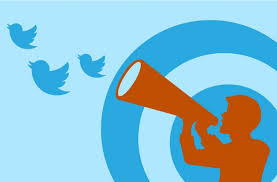Cast A Narrow Net
Audience targeting through social media advertising, is one of the most powerful developments in advertising. This not only helps you to target a specific audience based on age or location, but also around interests and passions. Connections on Twitter tend to share similar skills, hobbies, interests, and job roles, rather than being based on family and friendship. So it is easier to be picky when building an audience to maximize engagement with your advert.
Advertise To Followers Of Similar Events
Don’t be afraid to mine your competitor’s accounts for a target audience – poaching followers is fair game. Twitter targeting is especially valuable if you’re looking to target people based on their networks.
Excite Sponsors By Including Them In Promoted Tweets
Everybody included in a tweet gets notifications when it is ‘shared’ and ‘liked’. Advertise one of your organic tweets that includes their Twitter IDs, and they’ll notice the activity around the tweet compared to ones on their own account. And they won’t know that the boost will be down to Twitter Advertising. This tactic is a particularly good way to excite smaller sponsors/suppliers or those not social media savvy.
Beta-Test Your Ads For Free First
You’re likely to be publishing multiple tweets and Facebook posts every day. Some of these messages will resonate with followers; others won’t. Monitor which ones are being clicked, shared, and commented on. These high-performing organic posts make the best candidates for your social ads. If you’re not sharing content, tweet more often – and pay for the best performing updates.
These tweets all have the same purpose, use similar words, and were given equal amounts of budget. However the tweet engagement levels and costs per engagement shows that if tested for free first, and then the entire budget went on the top two performing tweets instead of sharing across all, the budget would have gone far further and the tweets would have got far more engagements.
Dividing your advertising budget equally across all posts is a losing strategy, it doesn’t make sense. First, establish a minimum threshold of engagement on free tweets, and don’t waste your cash on anything that doesn’t perform better.
Twitter Users Love Live Events
Don’t unhook from the internet just because your event has started. Use any and all opportunities to communicate with attendees and those who were unable to make it. Attendees and suppliers are far more likely to see promoted tweets than just organic ones, and this will continue to build your event’s brand with everybody for future events.
Marketing in the moment can be discourage for brands used to planning well in advance. One trick here to is to plan for expected moments during the event before they happen. That way, you can resource your team around key moments to make the most of them.
Use Twitter Analytic's, Set Goals, and Meet Them
To be successful on Twitter as a brand you need to work out what’s working for you, and what isn’t – analytic will show you where to concentrate your efforts. By analyzing how users are reacting to certain tweets, you’ll soon be able to narrow down a short list of what works well for your business.
Analytic's gives you the power to learn about the audience you’re trying to reach out to, and how you can be successful with each and every tweet.
Analytic's gives you the power to learn about the audience you’re trying to reach out to, and how you can be successful with each and every tweet.
Be Aware Of Ad Algorithms
Post engagement and spending your budget quickly will improve your reach and reduce the cost. Advertising newer tweets and higher levels of engagement gives you a higher quality-adjusted bid (the more recent the tweet and higher levels of engagement, the more aggressively Twitter will show your ad at a lower cost). With Twitter Advertising focus on winning the day rather than spreading the budget across the week.
Talk Like A Real Person
Remember, Twitter is a social medium. For higher engagement levels, use social speak for all of your paid (and unpaid) posts. Include links to interesting blog posts or better articles written by others published somewhere else, rather than solely promoting commercial pages – to keep it conversational.
Re-marketing
Like Facebook, Twitter is a great place to advertise to users that have visited your event’s site but not bought tickets. This involves setting up a pixel (you can easily create a Twitter pixel to place in the header tag of your event’s website template) and target people on Twitter that have visited your website. Since they’ll already be familiar with your brand, they’ll be much more receptive and likely to engage the second time around.Twitter Advertising is a great tool for laser-focused targeting to amplify what you are already doing. Cheap, simple and accessible to all, it allows event organizers engage with attendees before, during, and after the event.

Comments
Post a Comment